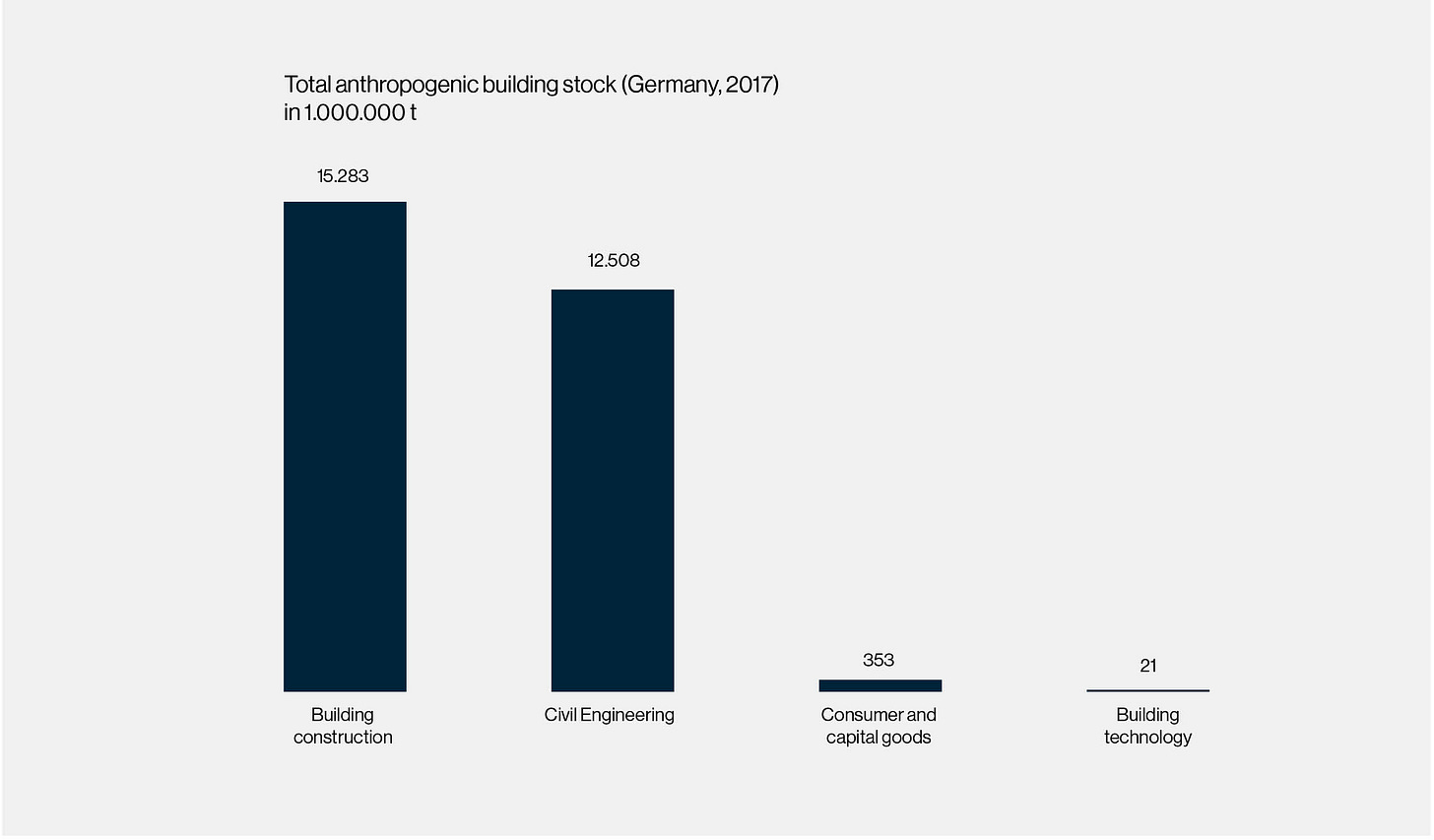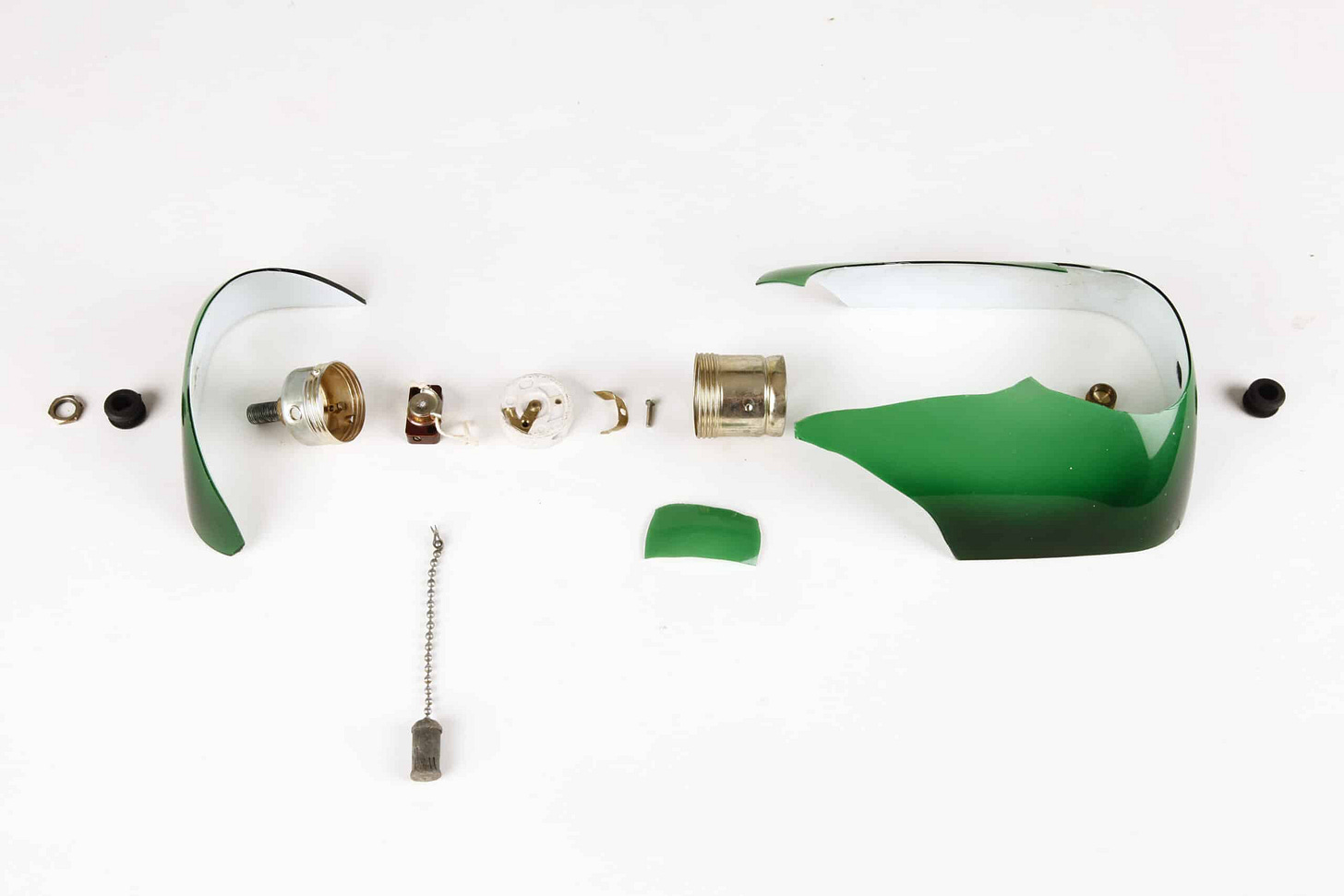Urban Repair
The concept of repair has gained significant attention in recent years, driven by the mounting environmental crises of climate change, biodiversity loss, and resource depletion. As a major contributor to these challenges, the building industry is now central to a shift in focus toward maintaining and restoring existing structures, rather than prioritizing new construction. How might the concept of repair unfold and manifest at an urban scale?
A Vast Stock to Repair
Today’s environmental crises—climate change, biodiversity loss, and resource depletion—are redirecting focus toward existing structures. The urgent need to drastically reduce construction rates to stay within planetary boundaries has shifted priorities from expansion, extraction and replacement to practices of maintenance, care, and repair.
And there is much to repair. "We are doomed to repair. This is hardly an astonishing insight in a world that ages with every passing moment," writes Florian Hertweck 1. Each year, vast quantities are added to the anthropogenic material stock, with the built environment accounting for roughly 98% of this volume 2 . As buildings and infrastructure age, the demand for repair intensifies. Technological advancements and the cycle of planned obsolescence further underscore the need to maintain and repair what already exists.
Repair has become a vital, if underrecognized, component of the economy and environment. More engineers are now dedicated to maintaining and repairing existing technologies than to creating new ones. Yet, repair has long been overshadowed by a global emphasis on technological innovation and new material production
.
The Repair Society
The idea of repair as a response to the socio-ecological rifts caused by modern society is not new. As early as 1993, Wilfried Lipp introduced the concept of the "repair society," advocating repair as a means of restoring "equilibrium in the world." 3 Lipp framed repair not simply as a technical solution but as part of a broader cultural strategy aimed at preserving historical continuity and maintaining societal balance in the face of modernization. He argued that repair should extend beyond individual objects to become a societal imperative, with deep cultural and historical significance.
Recent exhibitions and publications have brought increased attention to repair within architectural practice and discourse. Silke Langenberg’s publications, Repair 4 and Upgrade 5, both engage with the topic and include her work at TU Munich, in which students are taught to repair everyday objects—such as furniture and machines—using advanced technologies like 3D printing and rapid prototyping. This work showcases how repair can blend traditional practices with cutting-edge techniques.
Publications such as the "Great Repair" issue from ARCH+ and exhibitions in Berlin and Paris 6 reinforce the vision of repair within modernity while proposing a paradigm shift. They offer concrete examples of repair practices across various scales and contexts, contributing to a growing discourse on sustainability and resource conservation.
In popular culture, DIY initiatives and community-driven movements have championed repair for years. Spaces like Repair Cafés and Fab Labs promote independent repair activities, providing workshops and expertise and even producing spare parts that are no longer commercially available, challenging the pervasive "throwaway culture". A recent example is Denmark’s nationwide Repair Festival, “Hele Danmark Reparerer” ("All of Denmark Repairs") 7, which reflects the growing interest in repair culture.
Repairing the City
While much of the discourse on repair has centered on individual products and objects, its application at the urban scale remains largely unexplored. Urbanism has traditionally been associated with new construction and large-scale developments, rarely engaging with the potential of preserving and repairing existing urban infrastructures. This shift raises essential questions: can the principles of repair be applied to entire cities and urban systems? What might a "repair society" look like if integrated into urban planning and development? How might practices of repair unfold and materialize at an urban scale?
On one hand the concept of repair can often describe the repertoire of already existing urban practices, particularly linked to urban transformation projects; increasing connectivity, reconnecting fragmented urban fabrics, mending urban barriers, or revitalizing derelict sites. While these efforts are valuable, the focus here is on more fundamental transformations that a shift toward repair could introduce within the discipline beyond simply reframing or renaming existing practices. There are several avenues to explore in this context.
One avenue considers how urbanism can fulfill one of its core tasks—providing housing for a growing population—by focusing on the already-built environment. Housing demand often drives significant urban development; what if urbanism prioritized reclaiming, restoring, and adapting existing structures rather than defaulting to demolition and replacement? What new potential could arise when viewing repair on a broader scale? Wherein the existing built environment lies the greatest potential?
This includes understanding how various tactics and strategies of repair can be conceived and implemented in specific contexts: identifying the appropriate intervention for a specific site, understanding the capacity of the site to accommodate such an intervention, and assessing the potential impact it would have on the environment and community.
Another approach involves applying the concept of repair to the relationship between urban development and broader ecological networks. Urban repair need not focus solely on ecosystems within individual development boundaries; rather, it could address the connections between urban areas and their surrounding hinterlands, where substantial ecological degradation often occurs. In this way, repair becomes a means of healing ecological rifts and contributes to a more integrated approach to environmental resilience that extends beyond individual developments.
Urban repair: a contradiction in terms?
The preceding discussion highlights some of many broad avenues for exploring urban repair as a concept. Some might contend that repair at an urban scale is inherently contradictory, as the large-scale thinking embedded in urbanism has significantly contributed to recent socio-environmental challenges, with the drive for scalability often worsening these issues8. While there is some validity to this critique, examining repair at a larger scale remains crucial. Expanding the concept of repair to encompass urban systems offers a pathway to rethinking urbanism practices.
Hertweck, F. et al. Editorial. in The Great Repair - Politics for the Repair Society (2023).
German Environment Agency. Resource Conservation in the Anthropocene. (2019).
Vom Modernen Zum Postmodernen Denkmalkultus? (Lipp, München, 1993).
Reparatur: Anstiftung Zum Denken Und Machen = Repair: Encouragement to Think and Make. (Hatje Cantz Verlag, Berlin, 2018).
Upgrade - Making Things Better. (Hatje Cantz, Berlin, 2022).
Hertweck, F., Hiller, C., Krieger, M. & Nehmer, A. The Great Repair: Politics for the Repair Society. (ARCH+ Verlag GmbH, Berlin, 2023).
Repair Festival. Repair festival - Hele danmark reparerer. https://repairfestival.dk/ (2024).
See e.g., Tsing, A. L. The Mushroom at the End of the World: On the Possibility of Life in Capitalist Ruins. (Princeton University Press, Princeton Oxford, 2021).






